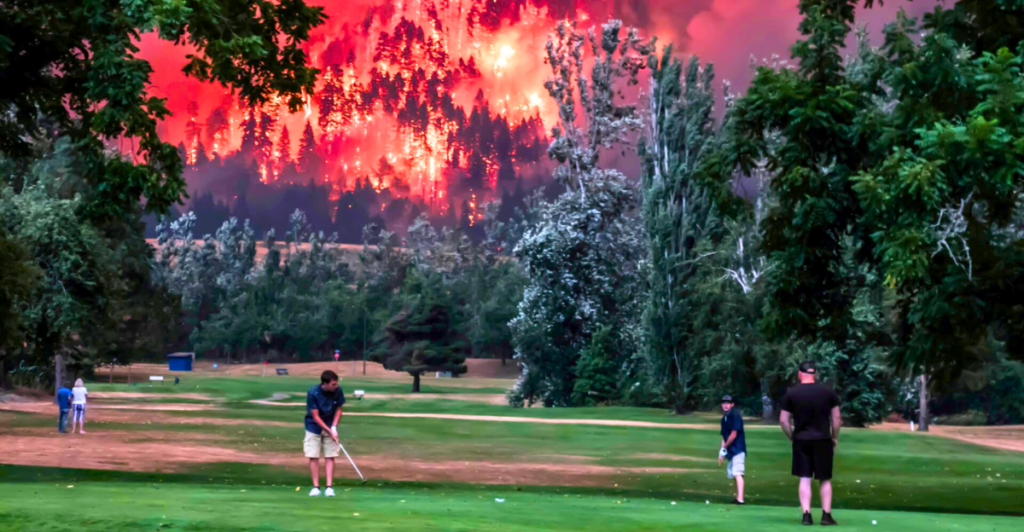
Wildfires are no longer seasonal disasters—they’re a year-round reality that changes life and the environment in many U.S. states. Rising global temperatures, prolonged droughts, and shifting weather patterns have extended fire seasons and intensified their ferocity.
Once confined to arid regions, wildfires threaten states with historically low fire activity, fueled by climate change and urban sprawl in fire-prone landscapes. In 2024 alone, wildfires cost roughly $1.8 billion, and in 2025, over 7,000 fires have been logged already—a 37% increase from the decade’s average.
Let’s take a look at ten states where wildfires are rewriting the safety, insurance, and land management rules. Wildfires are the new norm from California to New Jersey—reshaping ecosystems, economies, and lives.
1. California: The Wildfire Capital
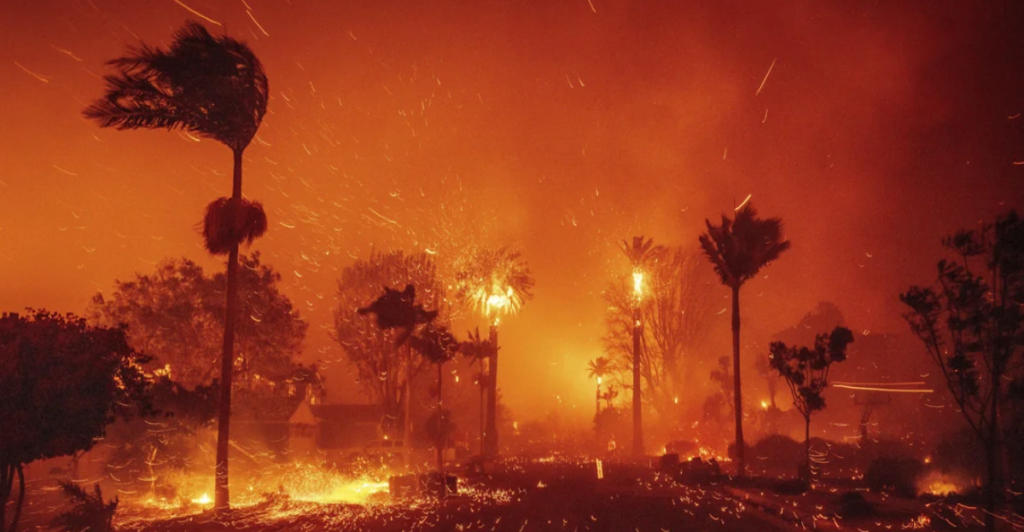
California is the leading state when it comes to wildfires, with over 1.2 million houses at moderate or high risk. Areas, where suburbs meet dry brush, become tinderboxes for giant fires. Blazes, such as the Camp Fire (2018) and the Dixie Fire (2021), burned cities to the ground, displacing thousands, fracturing communities and decimating ecosystems.
Climate change turned California’s wildfire season a year-round threat, with rising temperatures and decreased rainfall fueling mega-fires. Despite new firefighting technology, California’s vast forests and grasslands remain vulnerable to scorching, and unpredictable winds spread flames faster.
The state is also at the forefront of new mitigation strategies, such as controlled burns and forest thinning. But those initiatives are often thwarted by red tape and finances.
2. Colorado: A Growing Hotspot

Colorado ranks second because of its dry climate and expanding suburban developments near forested areas. The Marshall Fire in 2021 shocked residents by burning nearly 1,000 homes in winter—a season once considered safe from fires.
Warmer weather melts the snow earlier, extending droughts and fire seasons. The state’s mountainous terrain hinders firefighting efforts, while its booming population increases human-induced ignition risks. As blazes become more common and devastating, policymakers argue over forest thinning and controlled burns.
The state is also investigating new technology, such as drones with fire-starting tools, to better manage prolonged fire seasons. The challenge is balancing aggressive fire control measures and environmental considerations.
3. Texas: Flames Meet Urban Sprawl
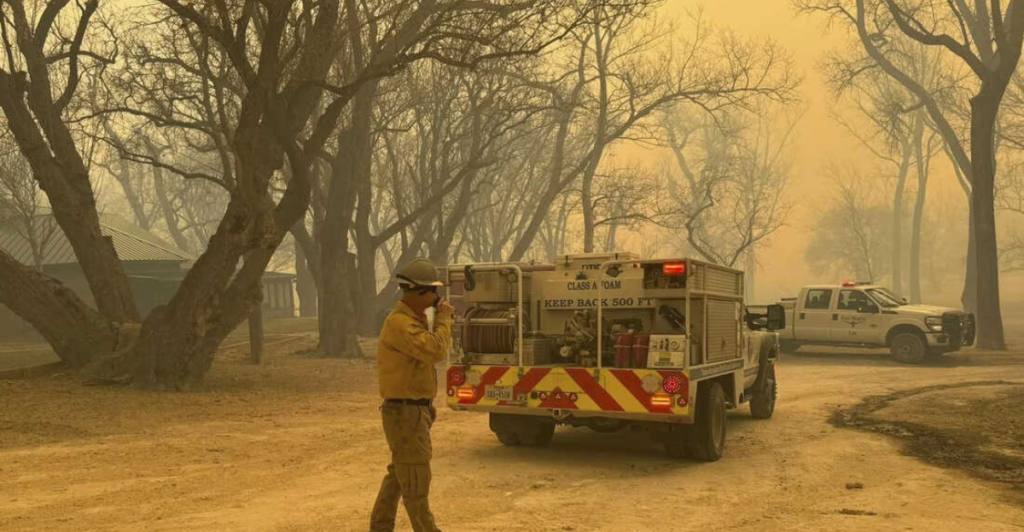
Texas may not come to mind as a wildfire state, but its open grasslands and urbanization put it at increased risk. Over 244,000 properties in Texas were threatened by wildfire damage in 2024 alone.
The Bastrop County Complex Fire (2011) is a vivid reminder of how quickly fires can devastate communities. Long periods of drought and high winds provide the perfect conditions for fast-spreading grassfires capable of destroying rural communities, cities such as Austin, and the state’s diverse ecology.
Texas faces a unique challenge in balancing wildfire prevention with its agriculture economy because controlled burns will likely have devastating effects on livestock, wild animals, and crop yields. Now, the state is considering investing in fire-resistance building codes and public awareness campaigns to protect growing cities and rural farmlands.
4. Oregon: Wildfires on the Rise
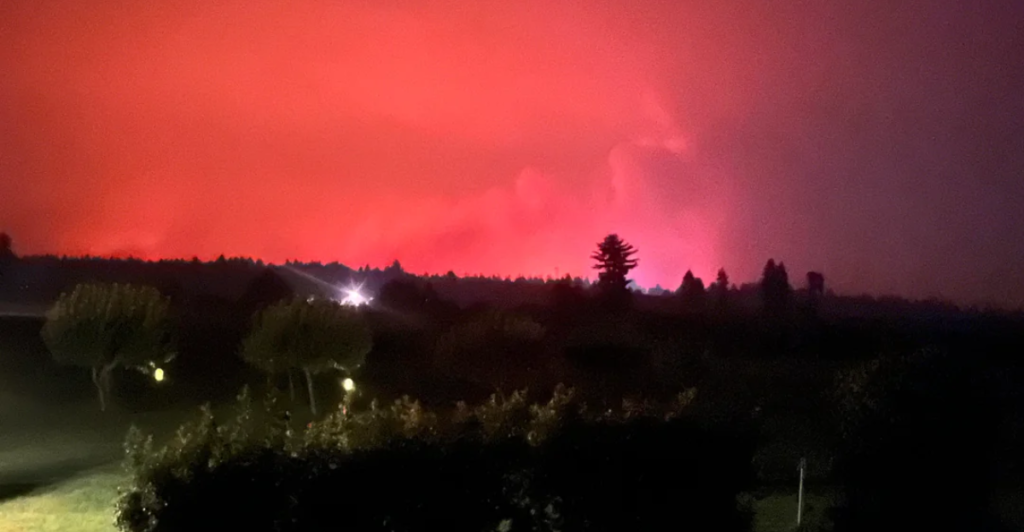
Oregon’s lush forests are no longer immune to raging wildfires. With over 129,000 properties at risk in 2024, fires, such as the Bootleg Fire in 2021, have burned hundreds of thousands of acres annually. Climate change has disrupted the region’s wet season patterns, leaving the forests too dry for long periods.
The state is also struggling with the ecological impact of fires on its timber industry—a key economic driver—and on wildlife habitats critical to biodiversity. Thus far, Oregon officials are striving to establish sustainable forestry methods and reforestation initiatives to restore damaged ecosystems.
However, the long-term implications of recurrent wildfires on Oregon’s iconic forests are a concern, with potential implications for both regional economies and global carbon sequestration strategies.
5. Arizona: Desert Fires Defy Expectations

Arizona’s arid climate has been fire-prone for years, but more recently, wildfires have become more frequent and severe. In 2024, over 124,000 homes were at risk, and wildfires, such as the Telegraph Fire in 2021, engulfed vast pieces of land.
Higher temperatures only add to the region’s already harsh desert climate, and invasive grasses, such as buffelgrass, fuel fast-spreading fires. As the state’s urban areas, especially near Phoenix, expand into fire-susceptible desert environments, they are increasingly threatened.
The state is focused on early warning systems and rapid response methods to mitigate these fires. Further, Arizona is working to integrate indigenous knowledge into its fire management practices, as traditional methods of burning have proven effective for maintaining healthy desert environments.
6. New Mexico: A State on Edge
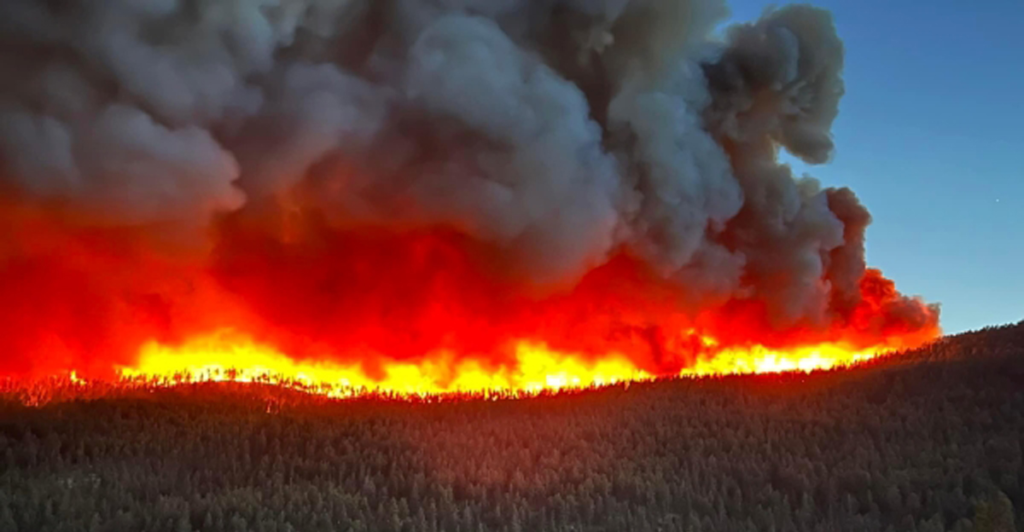
New Mexico’s arid climate and hilly terrain make it a wildfire hotspot, with over 120,000 properties threatened in 2024. The Hermits Peak/Calf Canyon Fire in 2022 became the largest wildfire in state history due to prolonged droughts and windy conditions.
Unfortunately, Indigenous communities are most affected by these fires as sacred lands and cultural sites are destroyed by the flames. Initiatives to integrate native land management methods into modern firefighting strategies offer these communities hope that future risks can be mitigated.
The state is also rolling out community-based prevention initiatives, wherein local knowledge is used to identify and manage fire risk. Finance support and backing, however, is an issue, with the state struggling to balance firefighting costs with state economic development proposals.
7. Washington: Rainforests to Infernos

Washington State’s reputation for rainy weather has not protected it from escalating wildfire events. Over 59,000 homes were threatened by wildfires in 2024, with the flames encroaching further and further into urban areas such as Spokane.
Drier summers linked to climate change have turned even the state’s temperate rainforests into tinderboxes. The state now faces challenges in balancing fire prevention with the preservation of its iconic old-growth forests, a significant carbon sink in the fight against climate change.
The state is currently experimenting with new forest management practices, such as selective harvest and replanting, to reduce fire risk while maintaining ecosystem health. It is also investing in advanced weather monitoring equipment and systems to improve forecasting and readiness for wildfire events.
8. Montana: Big Sky Country on Fire
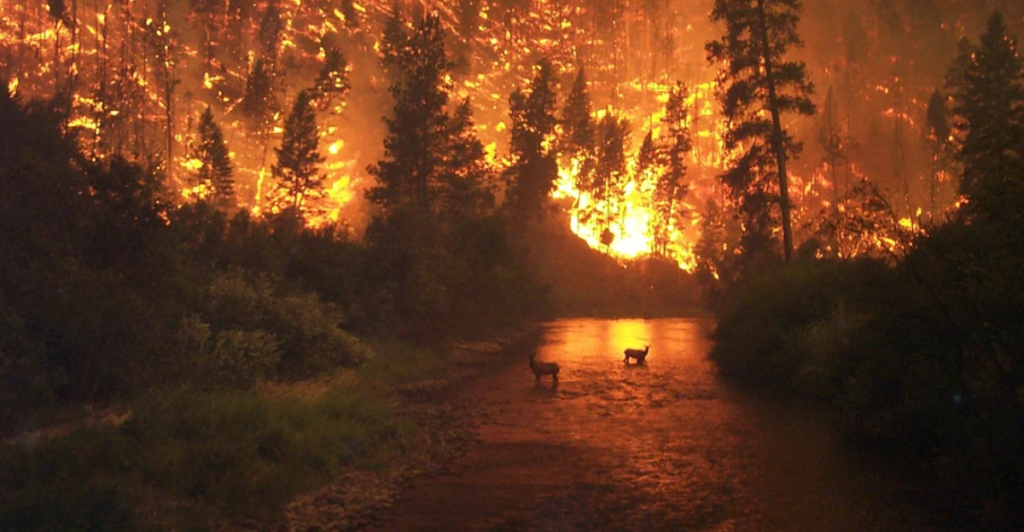
Montana’s vast wilderness is increasingly ravaged by wildfires, driven by warmer summers and earlier snowmelt. With nearly 88,000 properties at risk in 2024, events, such as the Richard Spring Fire in 2021, demonstrate the speed at which fires can spread across open rangeland.
The state’s reliance on tourism adds further challenges to popular destinations, such as Glacier National Park, facing repeated threats from smoke and fire. Further, the fires impact Montana’s diverse ecosystems, altering habitats for a variety of species.
Montana is focusing on collaboration among ranchers, conservationists, and firefighters to keep fire hazards in place while preserving its natural beauty. However, striking a balance between economic interests and the environment, particularly where wildfires encroach on wildlife and livestock habitats, is becoming increasingly hard.
9. Idaho: Rural Communities Threatened by Fires
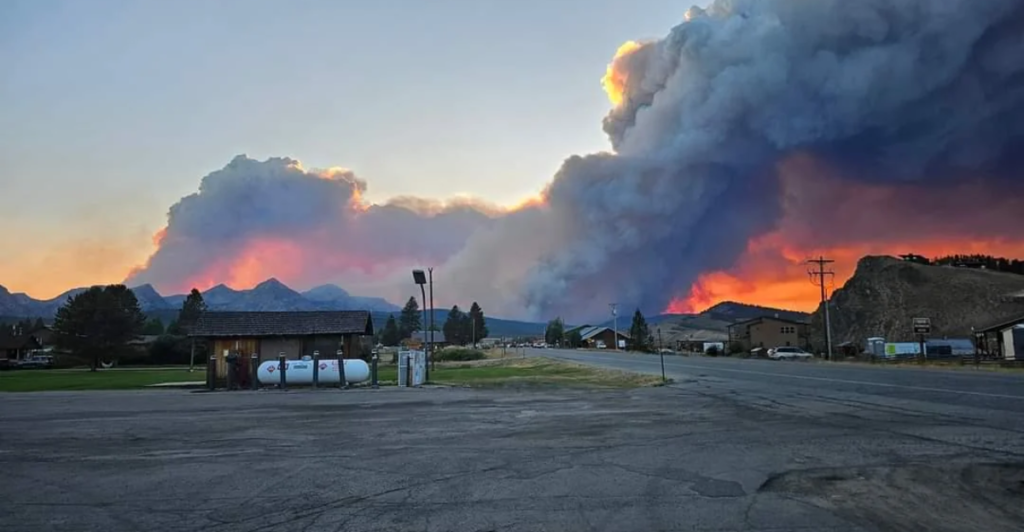
Idaho’s topography makes it even more difficult to fight fires as they become more frequent and severe. In 2024, over 104,000 properties were threatened, and rural communities were greatly impacted by the destruction due to a lack of resources for prevention and recovery.
Fires also threaten the state’s forest industry—a cornerstone of its economy—and disrupt vital wildlife corridors required for species migration. Now, the state is encouraging community-based fire prevention programs and experimenting with new technologies to enhance early detection and response.
Idaho is also enhancing its emergency response infrastructure to better serve remote communities where wildfires can spread quickly and that need rapid and effective action.
10. New Jersey: An Unlikely Threat
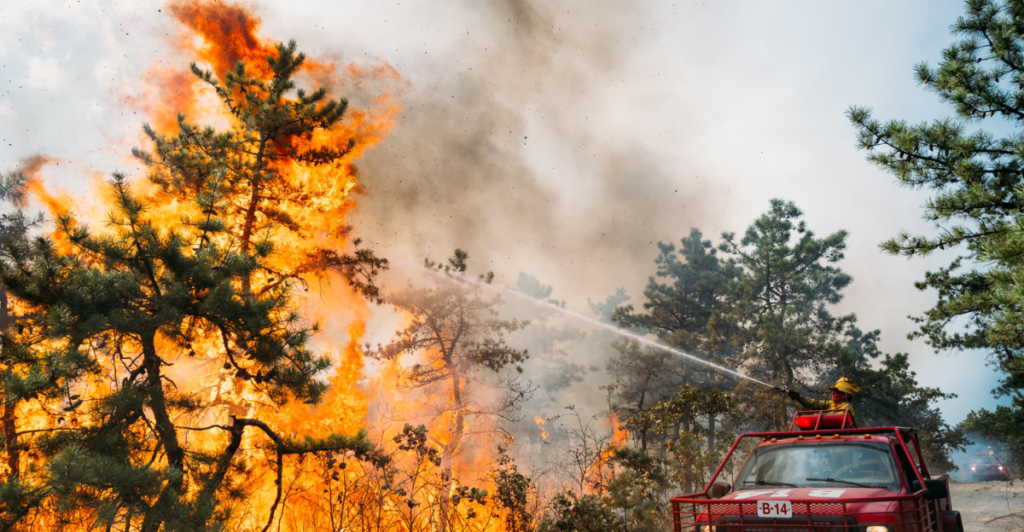
Much like Texas, you wouldn’t expect to hear that New Jersey has seen an increase in wildfires. Yet, the Pine Barrens region is particularly vulnerable due to its sandy soil and flammable foliage, resulting in threats to unique ecosystems throughout the state.
While smaller in size than Western mega-fires, the state’s fires still pose a significant threat to densely populated areas. As a result, officials are implementing fire-resistant building codes and public awareness initiatives to assist residents in preparing for surprise fires.
Moreover, the state is also considering cooperating with surrounding states to share resources and best practices for combating wildfires, as it recognizes the regional aspect of this new threat. New Jersey shows no state is safe from the growing threat of global warming-spurred wildfires.
Explore more of our trending stories and hit Follow to keep them coming to your feed!

Don’t miss out on more stories like this! Hit the Follow button at the top of this article to stay updated with the latest news. Share your thoughts in the comments—we’d love to hear from you!







